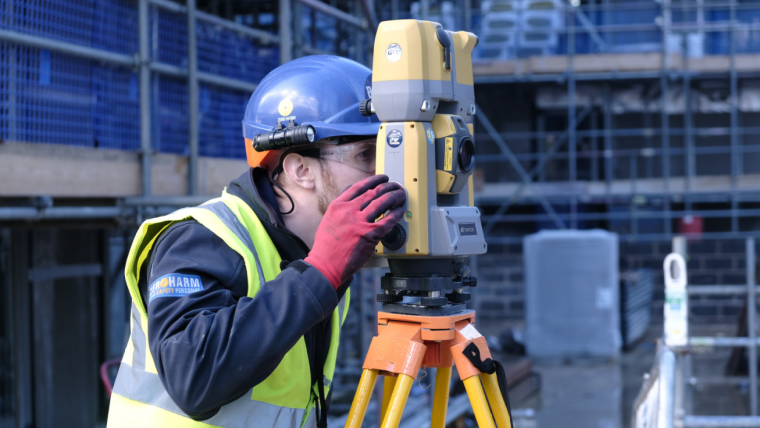How Can Surveyors Optimally Profit from the Digitalization in the Construction Industry?
Topcon, a global positioning partner for construction and geospatial businesses, sees building information modelling (BIM) as not just a benefit, but a requirement. Here, Cesar Mendoza, the company's product manager for vertical construction, discusses how surveyors can optimally profit from the digitalization in the construction industry and the trend towards BIM. He believes the UK government’s Construction Strategy, published in 2011, serves as a good example and has had a major impact on the uptake of BIM in the UK.
The European construction industry is expanding at a rapid rate and is expected to grow at a CAGR of 4.4% to reach US$ 2,778.3 billion by 2023. To meet these rising demands, it’s clear that we need to embrace technology, yet many in the industry are still hesitant to invest. While architects and large contractors are adopting new technology with great enthusiasm, such progressive thinking isn’t always replicated among services engineers and small-to-medium-sized contractors.
Despite the major benefits, such as increased productivity, reduced rework and improved data handling, many contractors can be reluctant to advance from the traditional, linear methodology. With hardware costs ranging between €15,000 and €40,000, together with the additional time needed to invest in training employees so they can take full advantage of the technology, it’s understandable why some contractors don’t want to take the risk. This is where surveyors have a big opportunity to profit. By employing a surveyor, contractors are getting both the technology and the experienced skillset of the surveyor. Contractors and surveyors working together is a mutually beneficial relationship; surveyors have great knowledge and understanding of how to run projects and utilize instruments, but don’t always know the different trades, applications and construction requirements – so this is where the contractor’s knowledge comes in. Also, using a surveyor eliminates the time needed for employees to get to grips with the technology. Developing a good relationship with contractors is how surveyors can succeed.
The trend towards BIM is also benefiting surveyors. We’re now seeing BIM as not just a benefit, but a requirement. For example, the UK government’s Construction Strategy, published in 2011, has had a major impact on the uptake of BIM in the UK. This now means that the government requires fully collaborative 3D BIM – with all project and asset information, documentation and data being electronic – and a minimum of Level 2 BIM is now implemented on all government construction projects. This requirement in the public sector has led to an overall increase in the adoption of BIM processes, with BIM usage levels in the UK now matching those in Singapore, the USA and Scandinavia. Crucially, rather than being a challenge for the industry, this greater adoption of BIM means that the role of surveyors on the construction site is more vital than ever before.
Cesar Mendoza is product manager for vertical construction at Topcon Positioning Group.

Value staying current with geomatics?
Stay on the map with our expertly curated newsletters.
We provide educational insights, industry updates, and inspiring stories to help you learn, grow, and reach your full potential in your field. Don't miss out - subscribe today and ensure you're always informed, educated, and inspired.
Choose your newsletter(s)
























